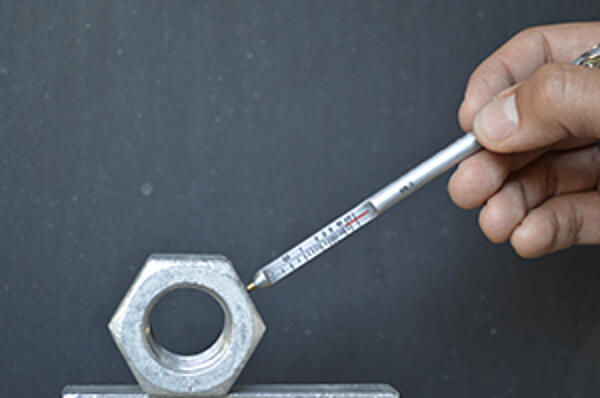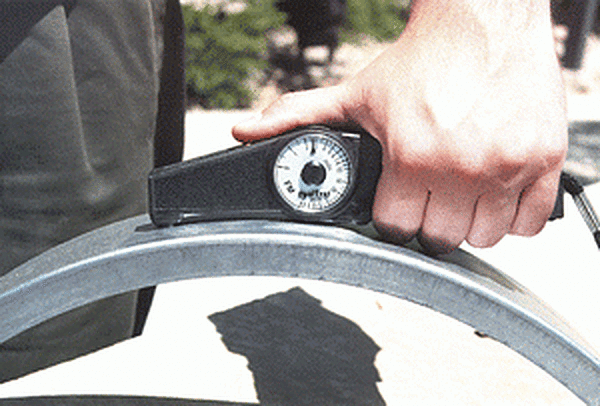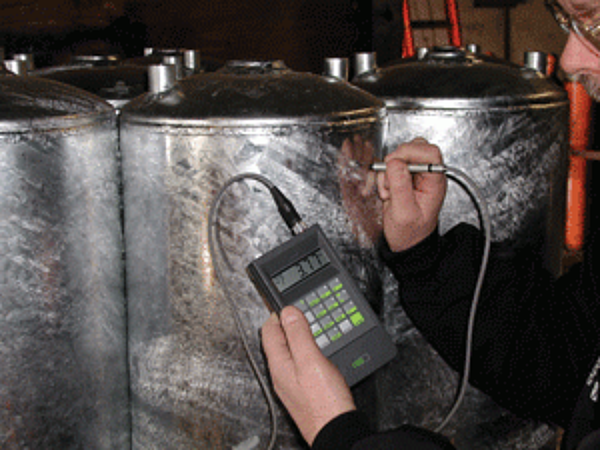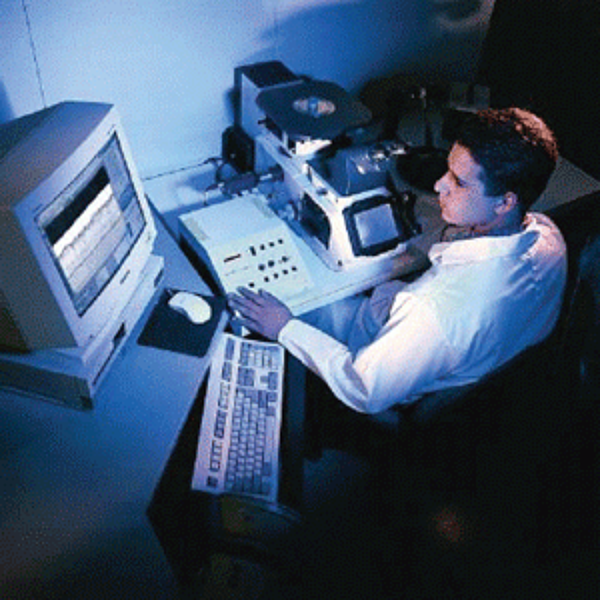Coating Thickness
Coating thickness refers to the thickness of the final hot-dip galvanized coating, while coating weight refers to the amount of zinc for a given surface area. There are two different methods used to measure the coating thickness of hot-dip galvanized steel: a magnetic thickness gauge and optical microscopy.
The first method, utilizing a magnetic thickness gauge, is a non-destructive, simple procedure. There are three types of magnetic gauges, and any of the three can be used quite easily in the galvanizing facility or the field.

The first type of magnetic thickness gauge, a pencil-style gauge (Figure 14) is pocket-size and utilizes a spring-loaded magnet encased in a pencil-like container. The tip of the gauge is placed on the surface of the steel and is slowly pulled off in a continuous motion. When the tip of the gauge is pulled away from the surface of the steel, the magnet, near the tip, is attracted to the steel. A graduated scale indicates the coating thickness at the instant immediately prior to pulling the magnet off the surface of the steel.
The accuracy of the pencil-style gauge requires it to be used in the true vertical plane because, due to gravity, there is more error associated with measurements taken in the horizontal plane or overhead positions. The measurement should be made multiple times because the absolute accuracy of this type of gauge is below average and it is difficult to determine the true coating thickness when only one reading is taken.

A banana gauge (Figure 15) is the second type of thickness gauge. With this gauge, coating thickness measurements are taken by placing the rubber magnet housing on the surface of the product with the gauge held parallel to the surface. A scale ring is rotated clockwise to bring the tip of the instrument in contact with the coated surface and rotated counter-clockwise until a break in contact can be heard and felt. The position of the scale ring when the magnetic tip breaks from the coated surface displays the coating thickness. The banana gauge has the advantage of being able to measure coating thickness in any position, without recalibration or interference from gravity.

The electronic or digital gauge (Figure 16) is the most accurate, and arguably, the easiest thickness gauge to operate. The electronic thickness gauge is operated by simply placing the magnetic probe onto the coated surface and then a digital readout displays the coating thickness. Electronic gauges have the advantage of not requiring recalibration with probe orientation, but do require verification with shims of different thicknesses in order to confirm the accuracy of the gauge at the time it is being used. These shims are measured and the gauge is calibrated according to the thickness of the shim, and then this process is repeated for shims of different thicknesses until the gauge is producing an accurate reading in all ranges of thickness. One benefit of the electronic or digital gauge is the ability to store data and perform averaging calculations which facilitates the whole process.
ASTM E 376
The specification ASTM E376 contains information for measuring coating thickness using magnet or electromagnetic current. It provides some tips for obtaining measurements with the greatest accuracy, as well as describing how the physical properties, the structure, and the coating can interfere with the measurement methods. It also contains some general guidelines for how to reduce errors. Some of the key requirements and guidelines include:
- Measurement readings should be as widely dispersed as possible
- Measurements on large products should be made at least 4 inches from the edge
- Readings should be on regular areas of the coating
- Readings should not be taken near an edge, hole, or inside corner
- Readings taken on curved surfaces should be avoided, if possible
- At least five readings should be taken to obtain a good, true value representative of the sample
- Reverify frequently, using non-magnetic film standards or shims above and below the expected thickness value

The other method to measure coating thickness, optical microscopy (Figure 17), is a destructive technique that exposed the edge of a coating under an optical microscope. The sample must be sectioned, then mounted and polished to show the exposed edge of the hot-dip galvanized coating. The calibrated eyepiece of an optical microscope can then determine the thickness of the coating. Because this is a destructive technique, it is typically only used for inspection of single specimen samples to resolve measurement disputes or for research studies. The accuracy of optical microscopy is highly dependent on the expertise of the operator.